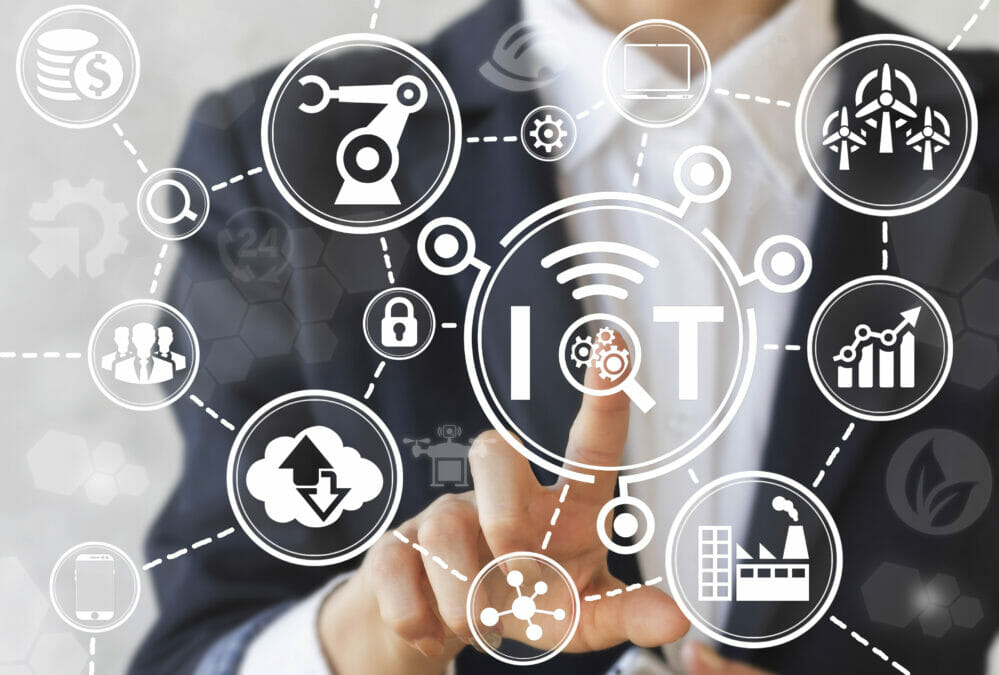The Internet of Things (IoT) has been playing an increasingly prominent role in industrial contexts, helping manufacturers to speed up operations at scale and innovate. This was a theme that was explored in a recent report conducted by Reply, “Industrial IoT: A Reality Check”, which delved into two key areas that are driving growth within the industrial market: smart factory, and smart transport & logistics.
The research is based on data collected using Reply’s Trend Sonar Platform, as well as support provided by the Teknowlogy Group, and examines the main markets for smart factories and smart transport & logistics, grouped into two clusters:
- “Europe-5” (Germany, Italy, France, Belgium and the Netherlands);
- “Big-5” (the USA, China, India, Brazil and the UK).
By connecting machinery and tools, Industrial IoT (IIoT) enables manufacturing companies to improve visibility of production in real time, with data generated by devices aiding optimisation.
“Without the Industrial IoT, Industry 4.0 cannot exist,” said Filippo Rizzante, CTO of Reply.
“Data is the fuel for all “smart” use cases in the industrial world; industrial IoT is the crucial element that guarantees the infrastructure to collect data, to send them to the cloud and to manage the feedback post-analysis, all as part of a virtuous circle of benefits to business.”
Driving value from the industrial internet of things (IIoT)
Security considerations
As with any digital transformation initiative, however, keeping IoT infrastructure secure in a way that effectively mitigates evolving cyber attacks is a must. According to Reply’s research, cyber security is seen as crucial to the success of Industry 4.0 initiatives, and a clearer definition of responsibilities among managers is required to keep threats at bay.
Prominent security considerations among users of IoT technology include:
- Ensuring user privacy;
- Ensuring network-level security;
- Security endpoints for each IoT device;
- Tracking and managing each IoT device;
- Conducting comprehensive training programmes for employees involved.
Security for IoT infrastructure can benefit from AI capabilities, as explained by Rachel Grunwerg, Senior Manager at Storm Reply: “As a company, we are dedicated to Amazon Web Services (AWS) technology, and they’ve released a suite of IoT services that is powered by AI and computer vision. This has been helpful for us because it’s helped secure these solutions.
“For example, our new Asset Monitoring and Predictive Maintenance (A/M/P) product leverages the AWS AI and ML service, Lookout for Equipment. This service comes with pre-built ML models, and removes the need for a data scientist.
“The truth is, many manufacturing companies don’t have data science teams, but with this technology, abnormal behaviours within machinery, equipment or assets can be recognised in real time. This removes any issues around human error.”
Computer vision for IoT security
Computer vision capabilities from companies such as Amazon have also proved useful for manufacturers in mitigating vulnerabilities within IoT networks, with what Grunwerg described as the “latest and greatest way to use computer vision” involving drones for monitoring assets.
Grunwerg continued: “Computer vision is allowing us to visualise normal and abnormal behaviour while going beyond the traditional senses used before. Drones can examine assets such as wind turbines, which are otherwise difficult to monitor due to size and location.”
From doorbells to nuclear reactors: why focus on IoT security
Additive manufacturing
One particular industrial IoT trend explored by Reply, known as additive manufacturing, entails the creation of products by adding materials layer by layer, and customising the product based on the real-time needs of customers. This is enabled by edge computing, as well as industrial IoT, and is delivered on-demand. The use of AI that is connected to equipment, meanwhile, helps to reduce waste and energy consumption.
In industrial settings, additive manufacturing has enormous potential for optimising the production, e.g. of parts and moulds, by reducing the required manual effort and limiting wasted resources.
Among Reply projects on additive manufacturing is the IDAM program, sponsored by the German Federal Ministry for Education and Research, where an edge solution enabled a digital twin. Several steps in the production process were automated, and equipment was connected securely thanks to Industrial IoT, guaranteeing the collection, storage, display and analysis of telemetry data, to be analysed with AI/ML algorithms.
Connected products
With industrial IoT technology being deployed to improve efficiency of factories and logistics centres during the pandemic, new investments have been aimed at maintaining the safety of users. However, a trend that’s expected to appear post-pandemic, according to Reply, is the involvement of final consumers, otherwise known as “connected products”.
This approach is set to accelerate investments towards solutions in which the collection and processing of usage data not only involves production machinery, but also the use of finished products.
A growing number of customers are being supported by Reply in designing, prototyping and launching connected products for both B2B and B2C markets. This increasing interest comes from the opportunity of building layers of services on physical products, with advantages for all the stakeholders.
Manufacturers can get data from the usage and consequently improve the next releases of the product and even the equipment necessary to manufacture them. This brings the possibility to get real-time or remote assistance for products, update them “over the air”, and customise them (or their outputs) based on their experiences/desires. According to the research, the possibilities are endless not only for consumer electronics, home appliances, wearables, but also for cars and smart homes.
The full Reply report, “Industrial IoT: A Reality Check”, can be found here.
This article was written as part of a paid-for content campaign with Reply










